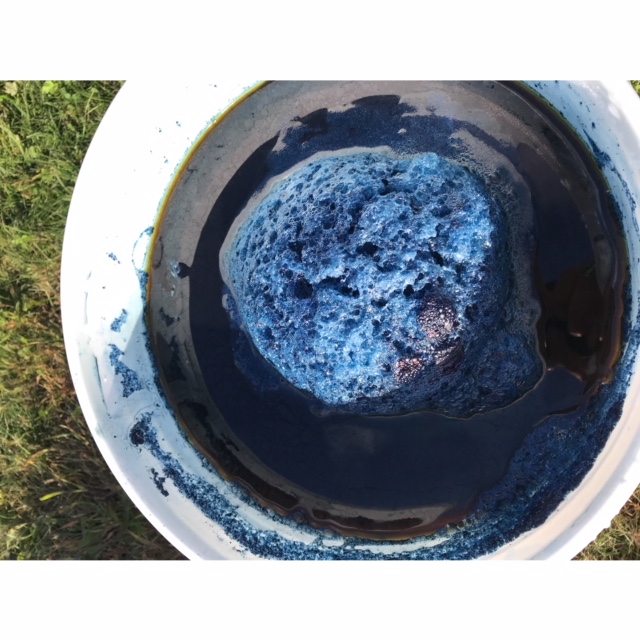This week: Indigo for printing and how is calcium hydroxide and tortilla masa linked?
Every week, we are emailed with questions from our natural dye community asking simple and complex questions that we thought might be worth sharing. Of course, all of your burning questions are answered by natural dyer in chief, Kathy Hattori, Founder of Botanical Colors.
I’ve recently purchased some of your indigo and would like to know if I can use alum stone instead of the other items mentioned. I live in Mexico, and no one seems to know where to find pickling lime nor calcium hydroxide.
The term for calcium hydroxide in Mexico is “cal” or technically, hydroxido de calcio and its commonly used to soak corn to make masa for tortillas. The cal (calcium hydroxide) breaks down the corn and softens the husk so that more nutrients are available. You should be able to find this in most markets. I’ve seen vendors selling large rock-like pieces of it, but you should be able to find it in powder form, too. It looks like white powdered chalk but it is not chalk, it is “cal.” Alum stone will not work as an ingredient for indigo vats.
The other ingredient you will need is something to reduce the vat, or remove excess oxygen. You have a lot of choices: boil up some fruit parings (about a kg) of pear, peach, apples, rotten bananas with enough water to cover, then strain the fruit pulp liquid. Add the liquid to your vat and it should reduce. Other fruits should work well, including boiled orange peels. Lemons seem to be less successful.
I’m screen printing using your guar gum powder (mixed into a paste) along with natural dye powders. I’m using recipes which were perfected over time by someone in Europe. My question is concerning indigo. The recipe I use yields a blueish gray color. It contains only guar gum paste + woad powder + indigo powder. I would like a better blue – more blue and less gray.
I know that when vat dying with indigo three things are necessary – oxygen plus a reducing agent and an alkalizing agent. Do you have any suggestions to improve the simple recipe I was given?
Using indigo as a pigment is a little different, as you pointed out. In order to get a better blue, the best option is to harvest the indigo flower or aibana from the vat. It’s the cluster of bubbles at the top of the vat and it is the source of a rich blue pigment. Scoop it out (you can scoop out the foam on the top of the vat, too) and combine with your thickener, but try not to incorporate the vat liquid – only the flower and foam. The color will be very nice – much better than the indigo powder by itself. The reason is the powder, although it’s blue, is still unreduced and unoxidized. Once it reduces and oxidizes, the dark blue shade appears, and the gray color should disappear.


I’ve tried and tied in Spain (Pamplona) to find hydrogenated lime or calcium hydroxide for making an indigo vat and alum for mordanting fabric. I finally discovered that one can buy “cal muerto” in a 5 kilo bucket in a hardware store and it’s in rock form. You have to add water and let it dissolve to make it “cal vivo” and useable for the vat. But that’s the only lime I’ve been able to find. And I can’t find alum anywhere other than ordering it online. And I wasn’t able to figure out any suitable substitutes. And one hesitates to take powders through customs. Not sure what to do other than wait until I return home.